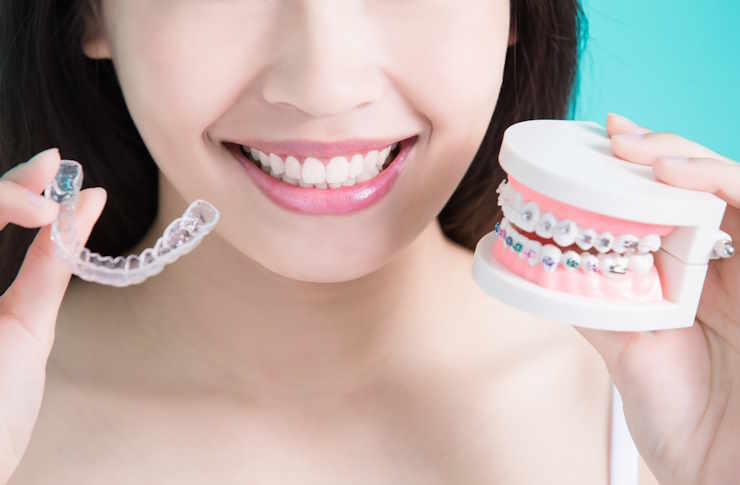Invisible Dentures Compared to Traditional Dentures for Missing Teeth in the United Kingdom 2025: A Detailed Overview
Advances in denture technology offer near-invisible options. For many UK people, flexible "invisible" dentures can improve comfort, aesthetics and oral health versus traditional acrylic dentures. This article explains what they are, how they compare and 2025 considerations for choosing them.

The landscape of dental restoration has transformed dramatically in recent years, with technological advances bringing new materials and designs to the forefront. For those dealing with tooth loss, the choice between modern flexible dentures and conventional rigid options involves weighing multiple factors including comfort, appearance, functionality, and cost. This comprehensive overview examines both types of dentures available in the UK during 2025, providing clarity on what each option offers and how they compare in practical terms.
Understanding Invisible Dentures
Invisible dentures, often referred to as flexible or thermoplastic dentures, represent a relatively recent innovation in dental prosthetics. These devices are crafted from lightweight, flexible materials such as nylon-based thermoplastics that blend seamlessly with natural gum tissue. Unlike their rigid counterparts, invisible dentures do not require metal clasps for retention, instead relying on the material’s natural flexibility to grip surrounding teeth and gums. This design makes them virtually undetectable when worn, hence the term invisible. The material adapts to mouth movements, providing a more natural feel during speech and eating. Patients often report that these dentures feel less bulky and more comfortable, particularly during the initial adjustment period. The absence of metal components also makes them suitable for individuals with metal allergies or sensitivities.
How Traditional Dentures Function
Traditional dentures have served as the standard solution for tooth replacement for decades. These prosthetics typically consist of acrylic resin teeth set into a rigid acrylic or metal base. The structure is designed to rest on the gums and, in the case of partial dentures, may include metal clasps that attach to remaining natural teeth for stability. Full traditional dentures rely on suction and the natural contours of the mouth for retention. The rigid construction provides excellent durability and can withstand significant biting forces, making them suitable for a wide range of dietary needs. Traditional dentures are manufactured through well-established processes that dental laboratories have perfected over time, ensuring consistent quality and fit. They can be adjusted, relined, or repaired relatively easily, contributing to their longevity as a tooth replacement option.
Comparing Comfort and Fit: Flexible vs Rigid Dentures
Comfort represents one of the most significant considerations when selecting dentures. Flexible dentures offer immediate advantages in terms of initial comfort due to their softer material and lighter weight. They conform to the mouth’s movements, reducing pressure points that commonly cause soreness with rigid dentures. The flexibility also means they are less likely to break if dropped, providing practical durability despite their softer nature. However, traditional rigid dentures offer superior stability for chewing tougher foods once the wearer has fully adapted to them. The firm base distributes biting forces more evenly across the gums, which some patients find preferable for eating a varied diet. Rigid dentures also maintain their shape consistently over time, whereas flexible dentures may gradually lose some retention as the material stretches. The adjustment period differs between the two types, with flexible dentures typically requiring less time for initial adaptation but potentially needing earlier replacement due to material wear.
Aesthetics and Visual Appeal
Appearance plays a crucial role in patient satisfaction with dentures. Invisible dentures excel in aesthetic terms, as their gum-coloured flexible material blends naturally with oral tissues. The absence of visible metal clasps means they remain discreet even when smiling or speaking. The translucency of the thermoplastic material mimics natural gum tissue more convincingly than the opaque acrylic used in traditional dentures. Traditional dentures, while effective, may show metal clasps on partial dentures, which can be visible when smiling. However, modern traditional dentures have improved significantly, with tooth shades and gum colours carefully matched to individual patients. Full traditional dentures without metal components can appear quite natural when properly fitted. The choice often depends on personal priorities: those seeking maximum discretion may prefer invisible dentures, while those prioritising function and longevity might accept the slight aesthetic compromises of traditional options.
Stability and Performance
Stability during eating and speaking determines how well dentures perform in daily life. Traditional rigid dentures generally provide superior stability for demanding tasks like chewing tough or sticky foods. The firm base creates a solid platform that distributes force effectively, allowing for more confident eating. They also tend to maintain their fit longer, as the rigid material does not deform over time. Flexible dentures offer excellent retention through their gripping action but may shift slightly during heavy chewing due to their flexible nature. This can make eating certain foods more challenging for some wearers. Speech adaptation varies between individuals, though the lighter weight of flexible dentures often facilitates clearer pronunciation initially. Both types require proper oral hygiene and regular dental check-ups to maintain optimal performance. The choice between stability types depends on individual jaw structure, remaining teeth, and lifestyle requirements.
Cost Considerations and Provider Options in the UK
The financial aspect of dentures varies considerably based on materials, complexity, and provider. In the UK, NHS dental treatment offers dentures under Band 3 treatment, typically costing around £306.80 as of 2025 for patients paying standard charges. This covers traditional acrylic dentures. Private treatment costs vary more widely. Traditional dentures from private providers generally range from £400 to £1,500 per arch, depending on materials and customisation. Invisible or flexible dentures typically cost more, ranging from £600 to £2,500 per arch privately, reflecting the specialised materials and fabrication techniques required.
| Denture Type | Provider Type | Approximate Cost Range |
|---|---|---|
| Traditional Full Dentures | NHS | £306.80 (Band 3) |
| Traditional Full Dentures | Private Clinics | £400 - £1,500 per arch |
| Flexible/Invisible Dentures | Private Clinics | £600 - £2,500 per arch |
| Traditional Partial Dentures | NHS | £306.80 (Band 3) |
| Traditional Partial Dentures | Private Clinics | £300 - £1,200 |
| Flexible Partial Dentures | Private Clinics | £500 - £2,000 |
Prices, rates, or cost estimates mentioned in this article are based on the latest available information but may change over time. Independent research is advised before making financial decisions.
Major private dental providers across the UK including Bupa Dental Care, mydentist, and independent practices offer both traditional and flexible denture options. Costs often include consultations, impressions, fittings, and follow-up adjustments. Some providers offer payment plans to spread costs over several months. Geographic location within the UK can also influence pricing, with London and southeastern practices typically charging premium rates compared to other regions.
Making an Informed Decision
Selecting between invisible and traditional dentures requires careful consideration of personal priorities, budget, and oral health status. Consulting with a qualified dental professional provides essential guidance tailored to individual circumstances. Dentists assess factors including remaining teeth, jaw bone condition, bite alignment, and lifestyle needs to recommend the most suitable option. Many practices offer trial periods or temporary dentures to help patients experience different types before committing to a final choice. Understanding the maintenance requirements, expected lifespan, and potential adjustment needs of each denture type ensures realistic expectations and greater long-term satisfaction.
This article is for informational purposes only and should not be considered medical advice. Please consult a qualified healthcare professional for personalised guidance and treatment.



